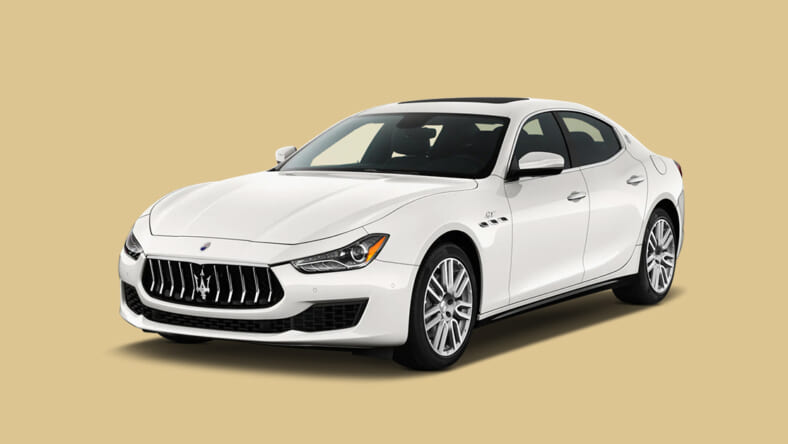A Brief History Of The Maserati Ghibli
Maseratis are often well-admired by the masses and the Ghibliis one such example that has remained beloved and relevant ever […]

Maseratis are often well-admired by the masses and the Ghibliis one such example that has remained beloved and relevant ever since its inception.
A Legend Is Born
From its beginnings in 1966 as a Ghia coupe, one of Giugiaro’s best designs, to developing a twin-turbo V6 with Connolly leather for the nineties, to developing the first diesel sedan with the trident up front, the Ghibli has come a long way. During the 1966 Turin Motor Show, Giugiaro debuted the 8-cylinder Ghibli with a resounding success comparable to that of the highly successful Sebring, and the Mistral debuted at the same time.
The company maintained its racing heritage and attitude while at the same time evolving into a high-performance road vehicle maker that is unlike anything else. During these years, Maserati came up with the idea for a luxury sedan with a racing engine that would become one of Maserati’s trademarks – the Quattroporte. Despite this, Maserati was sold to Citroen in 1968 because Orsis needed a partner that was capable of ensuring Maserati’s future when the industry was undergoing radical changes.
During the 1960s, Italian automobile designer Giorgetto Giugiaro and Maserati engaged in a decisive encounter that ushered in an era of revolutionary design. It was in the golden years of the automotive industry that the Ghibli was released. Ghibli was crafted as a powerful model that also offered a luxurious yet comfortable travel experience. And from the history of the machine, it would be safe to say that the objective was accomplished.
A Norm-Defying Design Marvel
In November 1966, the first Ghibli, a two-seater concept car, was unveiled at the Turin Motor Show as a 2-seater concept car. An early Giorgetto Giugiaro, then working for Ghia at the time, designed its steel body with its low, shark-shaped nose, using his visionary talent. This car had pop-up headlamps, leather sports seats up front, and alloy wheels as part of its features. There were two rear seats on the production model of the Ghibli, which consisted of nothing more than a cushion without a backrest, which allowed the Ghibli to be marketed as a two-door 2+2 fastback coupé to further improve its marketability. In March 1967, the first deliveries of the newly developed product were made.
A front-mounted quad-cam 4.7-liter dry sump V8 engine was mated to a five-speed ZF manual transmission along with an optional three-speed automatic transmission, making the car a smooth driving experience. The engine was able to produce 306 horsepower from its three-cylinder configuration. 0-60 mph was reached in only 6.8 seconds, and the top speed was 155 mph in a time of 6.8 seconds.
Because of its low center of gravity (since it was only five inches taller than a Ford GT40), four-disc brakes, and 3,400 lb curb weight, the Ghibli was able to handle corners just as well as straights and, with the introduction of the SS version in 1970, overall performance was improved further. To raise the horsepower count from 177 to 335 horses, the team employed a 4.9-liter V8 engine that produced 335 horsepower. In the early seventies, the Ghibli was a car that reached 170 mph, which was a fast speed.
Maserati also produced a limited number of convertible versions of the S-Class, which lasted seven years. As only 100 Spyders and 25 SS Spyders have been manufactured, they are among the most sought-after of the Kamm-tailed tractors.
The Ghiblis Of The 90s
As a result of the 1992 Maserati Ghibli II being launched, the original Ghibli’s production number almost doubled to 2337 units. Its earliest incarnation was known as the Tipo 336, and it was a derivative of the lower-end (and rather poorly made) Biturbo from the previous decade, which was powered by a 2.0-liter fuel-injected twin-turbo V6 up front and produced 306 horsepower and coke-flavored aerodynamics.
Occasionally, it came with a 2.8-liter engine which only produced 288 horsepower outside of Europe. The top speed was 155 mph, which was still acceptable for a car. Many changes were introduced for the 1994 model year, with ABS, adjustable suspension, and a fresh interior.
However, the most impressive Ghibli II was the Cup version which arrived in 1995 and added additional features. Thanks to the powerful 2.0-liter engine, it had a more powerful power output per liter than the Jaguar XJ220 or the Bugatti EB110, both of which had 335 horsepower. To meet the demands of race enthusiasts, only 57 cars with Brembo brakes, carbon fiber trim, and a firm suspension were made.
At the 1994 Geneva Motor Show, Maserati launched an updated Ghibli for the first time. In addition, the interior was refreshed, updated wing mirrors were fitted, 17-inch alloy wheels of a new design were added, the electronic suspension was fully adjustable, and ABS brakes were fitted.
The Ghibli Open Cup single-make racing car was announced in the late 1990s and is still in production today. A couple of sports versions of the vehicle were introduced in 1995. In the first case, the Ghibli Kit Sportivo was marketed as part of the nameplate handling package consisting of wider tires on split-rim wheels from OZ and a special set of springs, dampers, and anti-roll bars. It was released at the Bologna Motor Show in December 1995 and was a limited-edition Ghibli Cup road-going model that brought some of the features of the Open Cup racer into a road-going model, which was shown at the Bologna Motor Show in December 1995. It was powered by a 2.0-liter engine that generated 325 horsepower.
One of the sixty Primatist editions of the Ghibli was offered in orange paintwork and with a turquoise leather interior. From 1996 to 1997, these were the last Ghibli IIs that were produced.
